
My Bookshelf: Influential Books and Authors
|
|||
This section will allow you to glimpse into my bookshelf. I think the books a person reads reveal so much. Below is the book cover, the APA citation and the reason the book was included in my portfolio. Obviously, I could not include every book I have read. In general, the books I have included are not textbooks but are outside reading I completed on my own initiative that have had a formational impact on my educational philosophy statement and on the technology-rich work I design for students. |
|||
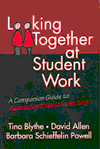 |
Blythe, T., Allen, D., & Powell, B. (1999). Looking together at student work. New York: Teachers College Press. This book is about professional conversations and specifically about putting student work at the center of those conversations. I think it is a powerful statement about the value of the work we design for students when we take time to look at it collectively as professionals and learn from our students.
|
 |
Bruner, J. (1966). Toward a theory of instruction. Cambridge, MA: The Belknap Press. Bruner believes in children's abilities to think. He also believes in raising children's awareness of their own abilities. These ideas resonate with me.
|
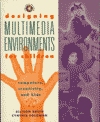 |
Druin, A., & Solomon, C. (1996). Designing multimedia environments for children. New York: John Wiley & Sons. While this book is somewhat dated, it still has relevance for today's designers. It covers the wide spectrum of multimedia activities for children, but the authors understand that the most engaging environments are those that include activities on and off the computer. I am also following with interest Druin's current project at the Human Computer Interaction Lab at the University of Maryland. |
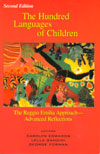 |
Edwards, C., Gandini, L., & Forman, G. (Eds.). (1998). The hundred languages of children: The Reggio Emilia approach - Advanced reflections (2nd ed.). Westport, CN: Ablex Publishing. This book is a collection of writings about the schools in Reggio Emilia, Italy. Their approach is heavily influenced by Vygotskyian theory. Reading this text, I crystallized my image of the child as a strong and capable learner and my view of the teacher as provacateur. These two views are fundamental to me and I believe must be addressed before any fruitful talk of learning strategies or classroom practices can happen.
|
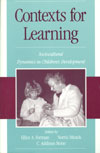 |
Forman, E., Minick, N., & Stone, C.A. (Eds.). (1993). Contexts for learning: Sociocultural dynamics in children's development. New York: Oxford University Press. This book is a collection of writings about the application of Vygotskian theory. Educators are not only studying Vygotsky, but are also pushing his ideas further. I particularly appreciated the chapters on scaffolding and the zone of proximal development.
|
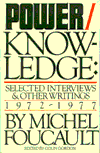 |
Foucault, M. (1980). Power/knowledge: Selected interviews and other writings from 1972-1977. New York: Pantheon Books. Foucault challenged prevailing thoughts about power; where it originated, how it manifested itself, and the sometimes negative ways it is portrayed. |
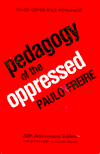 |
Freire, P. (2000). Pedagogy of the oppressed. New York: Continuum. Freire describes a process of raising consciousness, trusting people, and helping others find and exercise their own power. He notes in the Preface that his book is for "radicals"! I strive daily to become the type of revolutionary leader that Freire describes with my students. "Revolutionary leaders," Freire writes, "cannot think without the people, nor for the people, but only with the people" (p. 131, original emphasis).
|
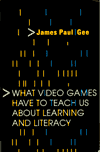 |
Gee, J. (2003). What Video Games Have to Teach us about Learning and Literacy. New York, NY: Palgrave. Video games have a bad reputation. So, what is an educator doing reading a book about them? Gee offers insight into the ways in which video games emulate the type of learning every educator would love to see from her students: long attention spans, determination in the face of frustration, a sense of ownership of the subject matter and more.
|
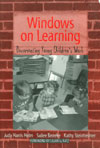 |
Helm, J., Beneke, S., & Steinheimer, K. (1998). Windows on learning: Documenting young children's work. New York: Teachers College Press. I believe that documenting students' learning, when performed by the teacher or by the students themselves, helps students to recognize their learning growth and their unlimited potential. It moves students from being objects of the school system or the teacher to being subjects in their own educational growth.
|
 |
Hirsh-Pasck, K., Eyer, D., & Golinkoff, R. (2003). Einstein Never Used Flash Cards. Emmanus, PA: Rodale. One chapter in particular interested me in this book. The ninth chapter discusses the benefits of play for the intellectual development of preschoolers.
|
 |
Koster, R. (2005). A Theory of Fun for Game Design. Scottsdale, AZ: Paraglyph. Koster's book is really about learning with games.
|
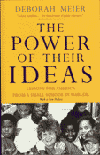 |
Meier, D. (2002). The Power of Their Ideas. Boston, MA: Beacon Press. Meier is an inspiration to all educators, but she keeps the attention where it belongs - on the students. She believes strongly in authentic assessment of students' work as evidenced by the portfolio graduation requirement in her schools. She also believes in multiage classrooms to allow time for students to develop and for teachers to nurture a deeper relationship with those students.
|
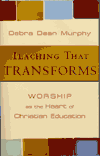 |
Murphy, D. (2004). Teaching that transforms. Grand Rapids, MI: Brazos Press. I read this book with a group of people as part of a book study. Murphy believes that to fully "know" takes not only one's mind and intellect, but also one's body and actions.
|
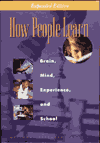 |
National Research Council. (2000). How people learn: brain, mind, experience and school. Washington, DC : National Academy Press. This book offered significant insights for me. I especially appreciated the discussions of the developmental growth of learners and of how experts' thought processrs differ from novices'. |
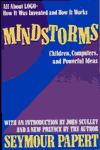 |
Papert, S. (1993a). Mindstorms. 2nd ed. New York : Basic Books. In addition to reading this book for the Logo philosophy, I truly appreciated Papert's analogy of learning math in "Mathland." It reminds me of the Mother Tongue pedagogy of Dr. Shinichi Suzuki.
|
 |
Papert, S. (1993b). The children's machine. New York : Basic Books. An innovative book where Papert extends his thoughts on making learning connected and personally meaningful to the student. |
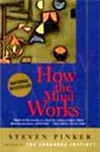 |
Pinker, S. (1997). How the mind works. New York : W.W. Norton & Company, Inc. The first two chapters were most relevant to my interests. Pinker discusses the certainties and the mysteries of the mind. Also of interest was Pinker's discussion of the successes and frustrations of artificial intellegence.
|
 |
Turkle, S. (2004). The Second Self: Computers and the Human Spirit. Cambridge, MA: The MIT Press. I appreciated Turkle's discussion of how people of all ages relate to the computer.
|
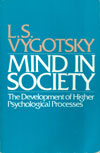 |
Vygotsky, L.S. (1978). Mind in society: The development of higher psychological processes. Cambridge, MA: Harvard University Press. So many aspects of Vygotskian theory have influenced me, it will be impossible to list them all. I certainly appreciated Vygotsky's views on play, the interaction of development and learning, and the role of language in learning. Another aspect of interest that I am investigating since reading this text is the role of inner speech in learning.
|
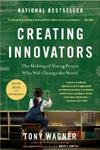 |
Wagner, T. (2012). Creating innovators: The making of young people who will change the world. New York: Scribner. Wagner contributes to the knowledge about innovators, their childhood, their home life and their schooling. It is an important read for any educator.. |
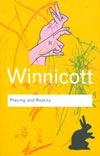 |
Winnicott, D.W. (2005). Playing and reality. London: Routledge Classics. Winnicott, a psychoanalyst, describes a "potential space" between mother and child during play, much like Vygotsky's zone of proximal development. However, Winnicott moves further to describe this place as filled with fantasy and illusion so that the child believes he/she can do more than he/she actually can do. I find this a powerful metaphor.
|
|
|